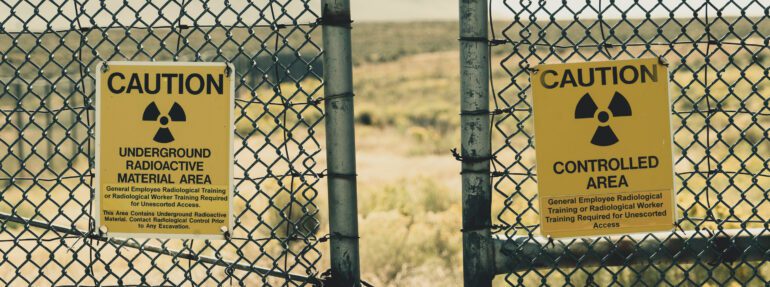TL;DR:
- Global efforts to enhance radiation detection for nuclear security are underway.
- IAEA technical meeting in August 2023 facilitated knowledge exchange among experts from 75+ countries.
- Indonesia showcased advances in portable radiation detectors with open-source software.
- Emphasis on leveraging emerging technologies to support frontline officers (FLOs).
- Decision-making support tools like TRACE and M-INSN aim to boost radiation detection capabilities.
- Smartphone app PAAT promises to streamline alarm assessments and nuclear security control.
- Discussions highlighted the need for technological sustainment and extensive training.
- Improvements in detector and data analysis tech seek to enable coordinated responses.
- Anticipated greater international cooperation in radiation detection for nuclear security.
Main AI News:
In the realm of nuclear security, nations are actively exploring innovative avenues to bolster their radiation detection capabilities. These endeavors encompass the integration of artificial intelligence, machine learning, uncrewed aerial systems, and other cutting-edge technologies. The objective is clear: to enhance existing radiation detection measures and fortify global nuclear security.
A pivotal moment in this quest unfolded during the IAEA technical meeting convened from August 14 to 18, 2023. Over 150 experts hailing from more than 75 countries gathered to exchange insights, share best practices, and grapple with challenges pertaining to radiation detection equipment’s use in the context of nuclear security. The event featured a dynamic blend of plenary sessions, specialized discussions, and focused working sessions—a true crucible of knowledge and experience.
“It was a convergence of minds spanning the spectrum from research and development to operational execution, involving frontline officers and high-level decision-makers,” noted Itimad Soufi, Head of the IAEA’s Nuclear Security of Materials Outside of Regulatory Control Section. Soufi emphasized how this diverse participation enriched discussions on the critical safety-security nexus and its implications for radiation detection equipment’s deployment and sustainability.
Among the standout contributors, Indonesia emerged as a beacon of progress in the realm of portable radiation detectors for nuclear security. Employing open-source software, Indonesia has strategically bolstered its nuclear security apparatus. Kristedjo Kurnianto, Senior Researcher at Indonesia’s Research Center for Radiation Detection and Nuclear Analysis Technology, underscored the importance of cross-cutting technology in radiation detection. “By harnessing multiple emerging technologies effectively, we’ve elevated Indonesia’s nuclear security measures. We stand as a testament to the power of innovation in safeguarding our nation,” Kurnianto declared.
The meeting’s core focus revolved around harnessing emerging technologies for radiation detection in nuclear security. Significantly, it highlighted the imperative of bolstering the role of frontline officers (FLOs). Alina Smyslova, Deputy Program Director of Sustainability for the Office of Nuclear Smuggling, Detection, and Deterrence at the United States Department of Energy National Nuclear Security Administration, reiterated this point. “Recent advancements in radiation detection technology prioritize simplifying and supporting the work of frontline officers. They address operational needs and challenges head-on,” said Smyslova, who also co-chaired the meeting.
The meeting featured the unveiling of decision-making support tools designed specifically to aid FLOs in executing their nuclear security responsibilities. The Tool for Radiation Alarm and Commodity Evaluation (TRACE) and the Mobile Integrated Nuclear Security Network (M-INSN) stand ready to empower nations in enhancing their radiation detection capabilities.
Furthermore, a forthcoming smartphone application, the Personnel Alarm Assessment Tool (PAAT), currently undergoing testing, promises to revolutionize the landscape. PAAT and similar applications promise to streamline knowledge transfer, elevate the efficiency of radiation detection alarm assessments, reduce subjectivity in decision-making, and provide greater command and control over nuclear security options.
Practical demonstrations of radiation detection technologies and decision-making support tools were a highlight of the event. Prominent discussions emphasized the need to leverage emerging technologies to address pressing challenges, including technological sustainment and the necessity for comprehensive training in radiation detection instrument operation.
This gathering witnessed deliberations on the potential of detector and data analysis improvements to facilitate seamless information sharing among decision-makers during radiation detection events. The aim is to foster a coordinated response in the face of such incidents.
In the aftermath of this landmark meeting, the prospect of heightened international collaboration in the field of radiation detection for nuclear security appears promising. As May Bee Leng Ong, co-chair and Director for Chemical, Biological, Radiological, Nuclear, and Explosives (CBRNE) at the CBRNE Center of Expertise at the Singapore Science and Technology Agency, aptly put it, “Enhancing radiation detection and security transcends technological pursuits; it’s a commitment to safeguard our shared future’s peace, resources, and stability.”
Conclusion:
The relentless pursuit of technological innovation in radiation detection for nuclear security, as evidenced by the recent IAEA technical meeting and Indonesia’s pioneering efforts, underscores a growing market demand for cutting-edge solutions. The emphasis on simplifying frontline officers’ work, coupled with the introduction of decision support tools and the potential for enhanced international collaboration, presents a significant growth opportunity for businesses operating in this specialized sector. As the world places greater importance on nuclear security, those poised to offer advanced technologies and expertise stand to gain substantial traction in the market.

